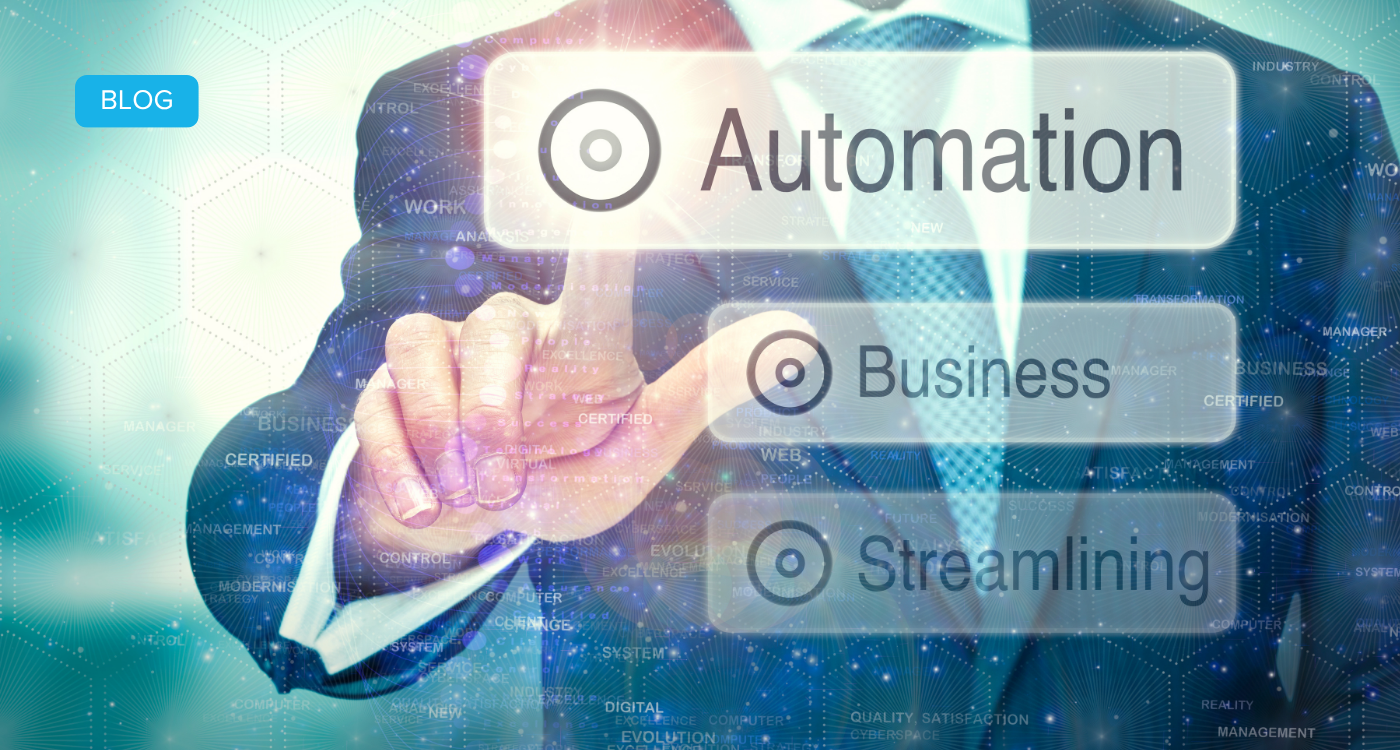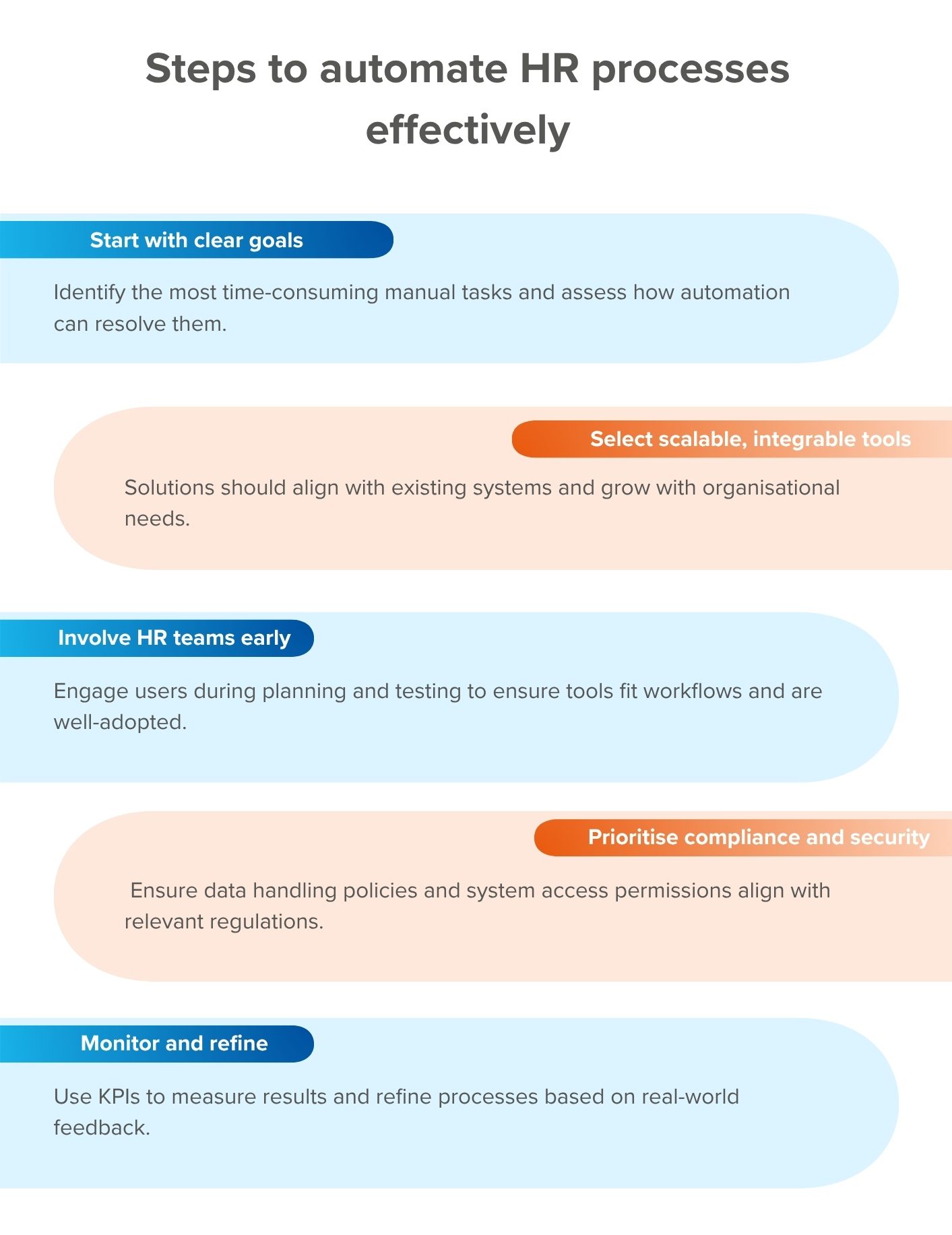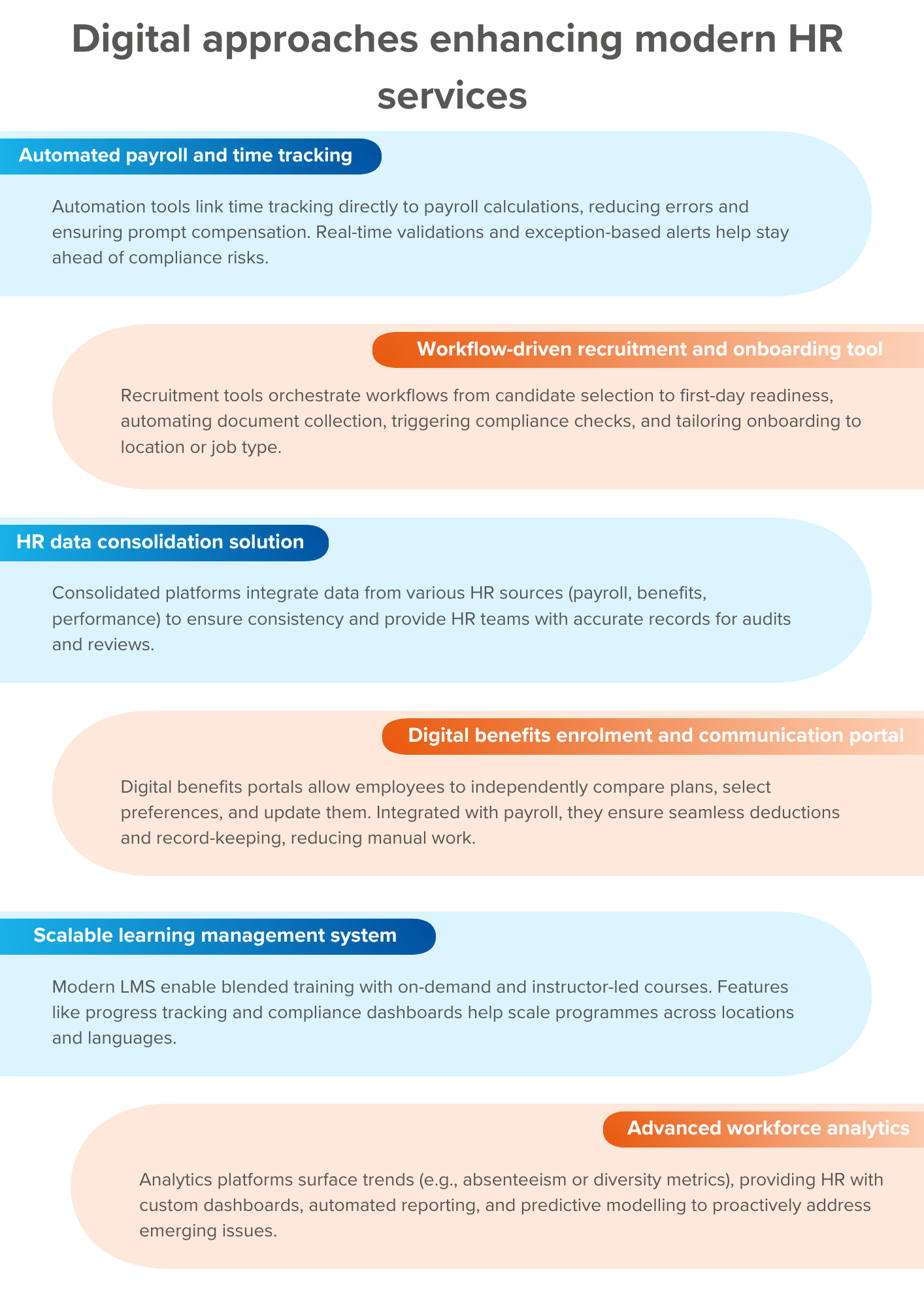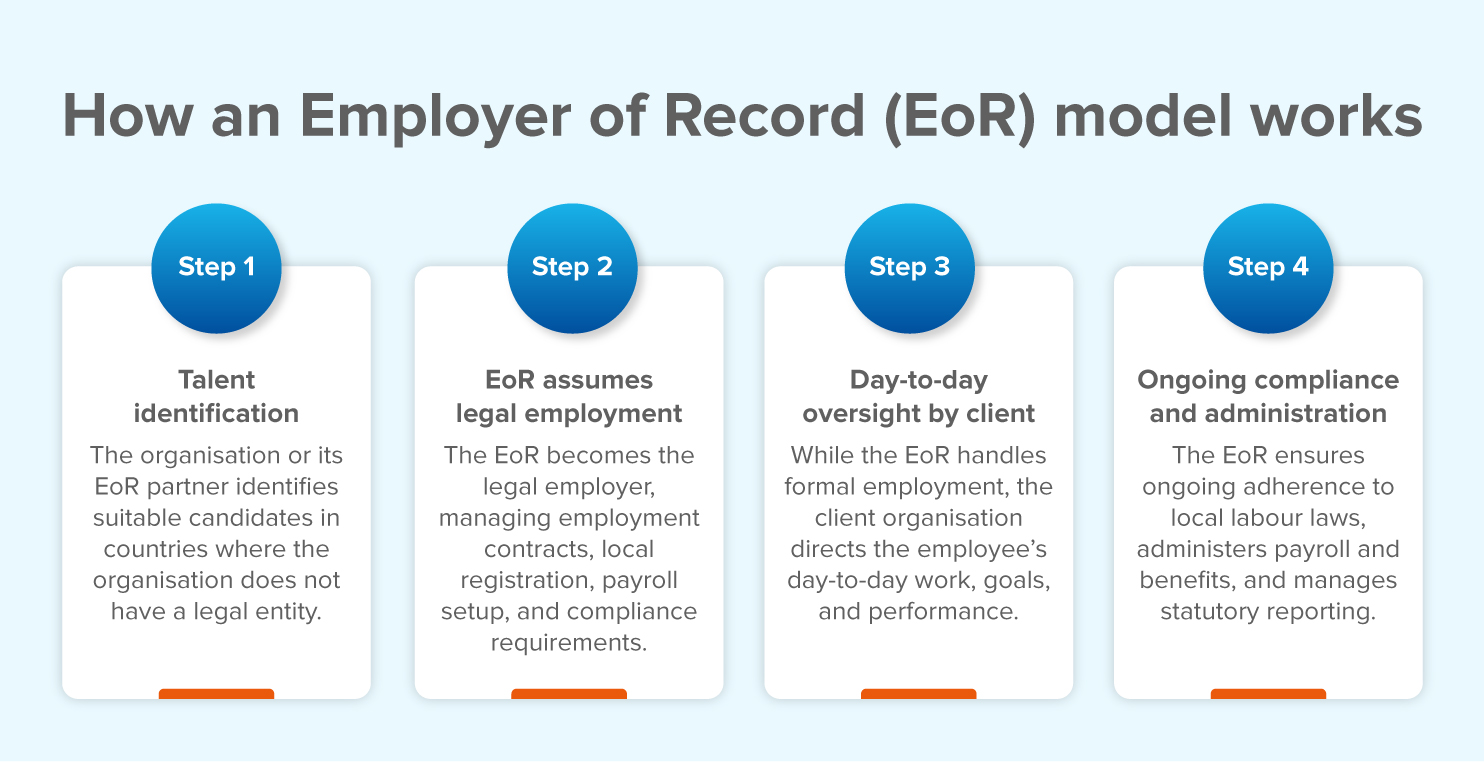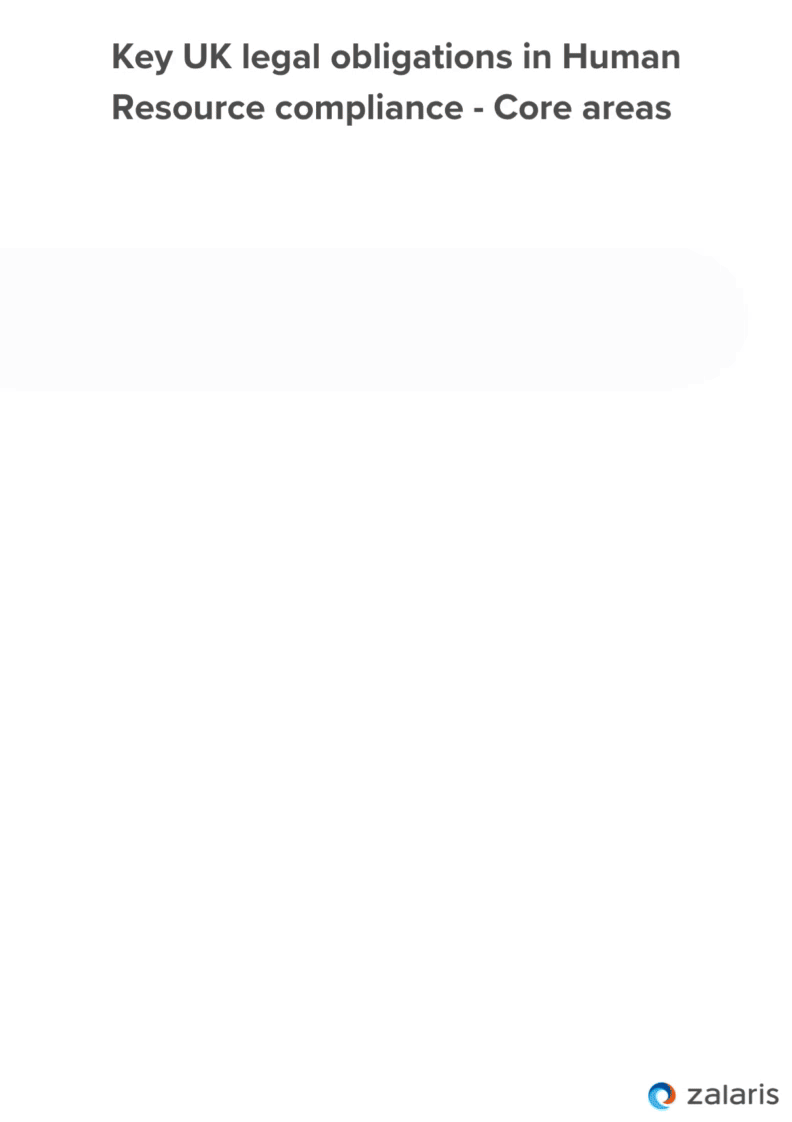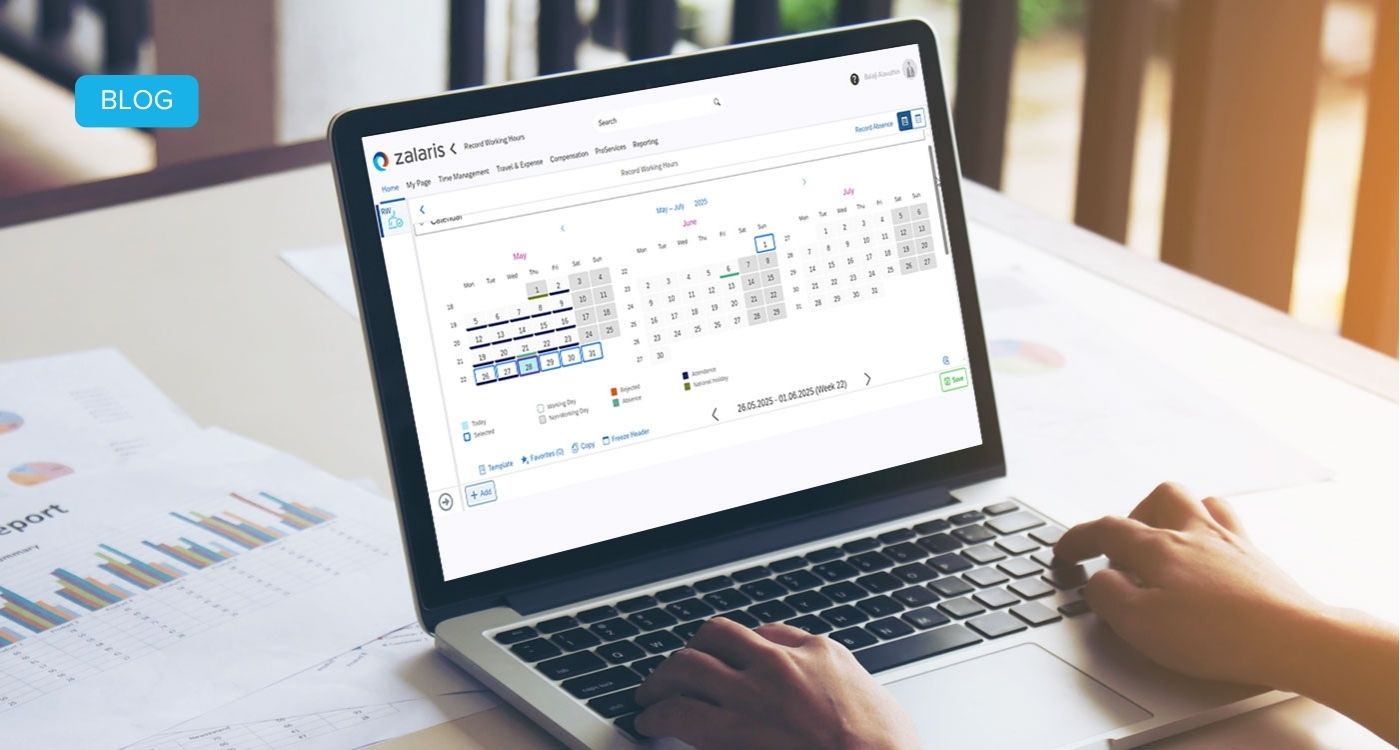Modern HR teams must balance strategic planning with flawless execution. However, administrative overwhelm prevents teams from dedicating adequate time and resources to concerns like workforce planning, DE&I initiatives, and employee engagement. HR automation bridges this gap for 85% of organisations, providing a reliable, consistent way to process business-as-usual tasks and manage data across the employee lifecycle.
In this article, we’ll explore how HR automation drives organisational efficiency, tackles key operational challenges, and helps HR teams focus on strategic priorities — supporting more agile, streamlined HR functions without sacrificing accuracy or the employee experience. By removing the burden of repetitive tasks, automation creates the space HR needs to lead on what matters most: enabling people and performance.
The strategic value of HR automation
Modern HR is expected to do more than manage processes — it must deliver strategic impact at scale. HR automation enables this shift by embedding speed, accuracy, and consistency into core HR functions. Whether it’s onboarding new employees across regions, maintaining payroll compliance, or managing workforce data, automation ensures these processes run reliably and with minimal manual effort.
Beyond efficiency, automation improves decision-making. Real-time insights from automated systems give HR leaders the visibility they need to address workforce trends proactively — from headcount planning to engagement risks and training gaps. Automated compliance controls also reduce the risk of costly errors, especially in multi-country environments with varying regulatory demands.
HR automation uses technology to streamline repetitive, rule-based Human Resources tasks. These include payroll processing, absence management, onboarding, document handling, and benefits administration. By reducing manual input and standardising workflows, HR automation increases accuracy, improves compliance, and enhances organisational visibility.
According to a 2024 report by Beaming, 44% of UK small and medium-sized enterprises (SMEs) have planned to invest £2.6 billion in automation to streamline tasks and enhance efficiency. This investment trend reflects a growing recognition of automation as a critical lever for scaling operations, driving consistency, and maintaining competitiveness in a fast-changing business environment.
Core benefits of HR automation for scaling organisations
HR automation provides tangible, measurable benefits that help businesses improve efficiency and drive strategic growth:
- Greater efficiency: Automated workflows reduce turnaround times and eliminate bottlenecks in critical areas like recruitment and payroll.
- Improved compliance: Built-in validation rules, document tracking, and audit trails help maintain adherence to GDPR and employment law.
- Cost savings: Reduced reliance on manual processing cuts administrative costs and enables better resource allocation.
- Enhanced employee experience: Self-service portals and automated updates create a smoother, more responsive experience for employees.
- Data consistency: Integrated systems reduce data silos and ensure real-time visibility for reporting and decision-making.
High impact use-cases for automation in HR
After having explored the core benefits of HR automation, we will now focus on the key areas where it makes the most significant impact across HR functions.
1. Payroll and time tracking
Payroll automation ensures timely, error-free salary payments and compliance with tax regulations. Integrating time tracking with payroll systems automatically calculates hours worked, overtime, and leave balances. Automation tools can validate inputs and apply local compliance rules, saving time and avoiding penalties.
2. Onboarding and offboarding
Automated onboarding solutions guide new hires through a structured experience, from paperwork submission to IT provisioning. This reduces administrative burden and enhances early engagement. Offboarding can also be automated to ensure consistent handovers, revoke system access, and collect feedback.
3. Performance management
Manual performance check-ins are often delayed or overlooked. Automated performance management tools enable timely notifications, structured feedback, and data analysis. This helps managers and employees align on goals, identify development needs, and track achievements, while streamlining appraisals and supporting continuous performance tracking.
4. Document management
Digital workflows make managing employment contracts, policy updates, and certifications more efficient. Automation reduces the risk of missing critical updates or version conflicts. With digital HR file management tools, documents can be archived, retrieved, and audited easily, ensuring compliance with data retention laws.
5. Employee queries and support
AI-powered chatbots can handle repetitive HR questions—such as those about leave balances, policies, or payslips—freeing HR teams for more strategic tasks. Intelligent virtual assistants offer 24/7 self-service, improving responsiveness and satisfaction while reducing case volumes.
6. Learning and development
Automation can personalise learning pathways based on job roles, performance feedback, and career aspirations. This ensures the proper training reaches the right employees at the right time. Automated learning management solutions promote upskilling and compliance-based training delivery.
Steps to automate HR processes effectively
Implementing HR automation effectively begins with a set of key best practices that support long-term success, scalability, and strong user adoption.
Image: Steps to automate HR processes effectively
A thoughtful, strategic approach to automation helps ensure lasting impact, user buy-in, and measurable improvements across HR functions.
Common pitfalls when implementing HR automation
While automation offers clear benefits, its impact can be limited by common implementation missteps. These pitfalls can be avoided with careful planning and foresight:
| Pitfall | Argument |
|
Over-automation
|
Not every HR process benefits from automation. Over-automating can depersonalise interactions and reduce employee satisfaction.
|
|
Insufficient training
|
Staff must be adequately trained to use new systems. Without this, automation can create confusion instead of clarity.
|
|
Lack of alignment
|
Automating disconnected processes leads to inefficiencies. Ensure cross-functional alignment before rollout.
|
|
Ignoring legal implications
|
Failure to address employment law or data protection regulations (such as UK GDPR) can expose organisations to legal risk.
|
The near future of automating HR processes
The next wave of HR automation is expected to shift from operational support towards predictive enablement. While many powerful tools already exist today, their full potential is only beginning to be realised. Rather than simply streamlining tasks, emerging systems are being designed to anticipate workforce needs — identifying burnout risks, forecasting resignations, and even suggesting tailored well-being interventions based on employee engagement data.
In the UK, 81% of HR professionals are already open to using AI in their roles, signalling strong readiness for this shift. AI-driven platforms are likely to act more as strategic co-pilots than basic tools, supporting tasks like drafting internal communications and optimising schedules. This empowersHR to shape culture, not just handle routine admin.
As generative AI technology continues to advance, HR teams will increasingly adopt natural language interfaces to build workflows, generate policy drafts, and design bespoke onboarding journeys, often within minutes. This dramatically reduces time-to-deliver.
With expectations rising for seamless, mobile-first experiences continue to grow, automation will expand even further into real-time, self-service interactions. Employees will come to expect instant answers, on-the-go access, and continuous development opportunities. Intelligent systems will personalise these interactions according to employees’ roles, needs, and working styles.
Real-world case-studies demonstrating HR automation success
From manufacturing to aviation and hospitality, organisations are using HR automation to boost productivity, cut costs, and improve employee experiences. These real-world examples show how automation delivers measurable impact at scale:
- Siemens used AI-driven automation to streamline its recruitment processes in the manufacturing sector. Implementing automated CV screening and AI-based matching tools reduced time-to-hire by 30% and increased recruiter productivity by 20%, allowing HR staff to spend more time on strategic tasks.
- MS + Delta Air Lines implemented automated interview scheduling and talent pooling within a contingent hiring process. Over 21,000 roles were filled in 2021, with 85% of presented resumes advancing to interviews and over 1,000 contingent roles sourced, demonstrating considerable gains in recruiter efficiency
- Marston’s PLC, migrated payroll systems to Zalaris’ PeopleHub platform. In ten months, four legacy systems were consolidated. These changes cut payroll costs by up to 30% and improved accuracy across 140,000 time records.
Together, these scenarios showcase how both AI-driven innovation and practical process automation can achieve significant efficiency gains, cost savings, and enhance HR service delivery with the right tools and strategy.
Scale smarter with HR automation
HR automation empowers organisations to grow with confidence, reduce overheads, and deliver a modern, responsive HR experience. By automating key processes like payroll, onboarding, and compliance, HR teams can focus on strategic priorities while ensuring accuracy and consistency.
Partnering with Zalaris means you’re not just automating HR – you’re building a future-ready foundation. Our end-to-end digital solutions and expert consulting services are tailored to simplify complex workflows, ease administrative burden, and support compliance across regions. With us, your organisation gains a trusted partner committed to helping you scale smarter, operate faster, and lead with confidence.
Ready to transform your HR operations? Book a consultation today and take the first step towards smarter, scalable, and future-proof HR through automation.
